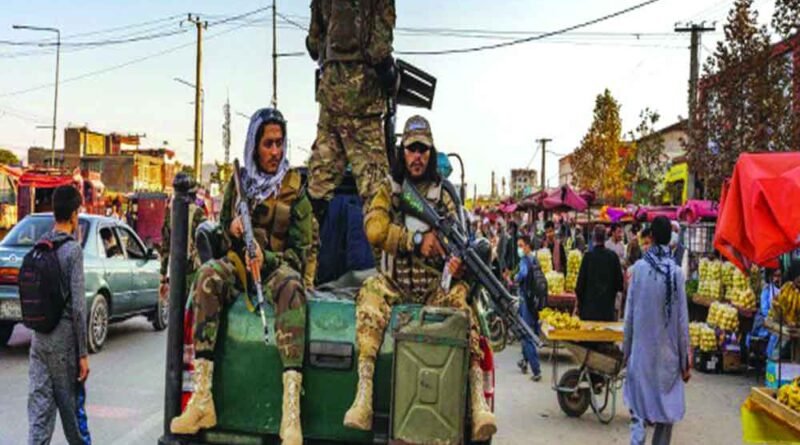Will the Taliban cookie crumble?
Ties between the Taliban-led Islamic Emirate and Pakistan are under severe strain, and the Afghan dispensation is running into a sea of other troubles
The Russian invasion of Ukraine has shoved events in Afghanistan to the margins of global public discourse. Yet, much has been happening in the blighted land. The country is in trouble. The economy is prostrate. The law and order situation is in shambles, with the Islamic State of Khorasan Province (ISKP, also referred to as ISIS-K), the Afghan affiliate of the Islamic State in Iraq and Syria (ISIS), posing a violent challenge. The ties between Taliban-led Islamic Emirate and Pakistan are under severe strain. Hence the question: Will the regime crumble?
To begin with the economy, essential commodities are scarce. Prices are skyrocketing. Large sections are going hungry. Unemployment is soaring. According to the International Labour Organisation (ILO), more than 500,000 Afghan workers lost their jobs in the third quarter of 2001. According to Khaama Press, one of Afghanistan’s leading news agencies, the number of people losing their jobs since the Taliban takeover is expected to rise between 700,000 and 900,000 by mid-2002 — which is round the corner. The figure is in accordance with those of the US Special Inspector-General for Afghanistan Reconstruction (SIGAR), which holds that 900,000 Afghans have lost their jobs since the Taliban captured power in August 2001. Women, SIGAR further holds, have been disproportionately affected — the number of jobs is likely to fall by 21 per cent since the Taliban’s ascent to power. The result has been a surge in migration to other countries. Christina Goldbaum and Yaqoob Akbary state in the The New York Times (February 2, 2022): “From October [2021] to the end of January [2022], more than a million Afghans in southwestern Afghanistan have set off down one of the two major migration routes into Iran, according to migration researchers.”
One reason for the economy’s prostration is the country’s law and order situation, which is in a state of collapse. The ISKP has sharply stepped up the frequency and lethality of its terror strikes. Asfandyar Mir, a senior expert at the US Institute of Peace, points out in a paper, titled The ISIS-K Resurgence, that the latter advocates “mass casualty attacks” against civilians and States. It intends “to topple the Pakistani Government, punish the Iranian Government for being a ‘vanguard’ of the Shias” and “purify” Afghanistan — “both by dislodging the Afghan Taliban as the main jihadi movement in Afghanistan and punishing minority groups, like the Hazaras.”
In ‘Countering a Resurgent Terrorist Threat in Afghanistan’ (Foreign Affairs, April 24, 2022), Seth G Jones cites the estimate that “the ISKP carried out 76 attacks on Taliban forces between September 18 and November 30, 2021, a significant jump from 2020, when it conducted only eight attacks during the entire year”. There was a fall in the incidence of ISKP’s strikes during the winter following the Taliban’s harsh military action, particularly in Nangarhar province. However, there is an upward trend again. Christina Goldbaum writes in The New York Times datelined May 1, 2022: “The attacks of the past two weeks have left at least 100 people dead, figures from hospitals suggest, and stoked fears that Afghanistan is heading into a violent spring, as the Islamic State’s affiliate in the country tries to undermine the Taliban Government and assert its newfound reach.”
Will the Taliban be able to squelch the ISPK’s challenge? The latter had been confined mostly to eastern Afghanistan during the past six years. Goldbaum points out that since the Taliban takeover, it “has grown in reach and expanded in nearly all 34 provinces”. One reason, of course, has been the release of jailed ISKP prisoners by the Taliban after capturing power, which virtually doubled the former’s strength from around 2,000 to around 4,000. Also drawn to it are young Taliban fighters who have gained little from the Islamic Emirate. Further, as Seth G Jones points out, some of the former members of Afghanistan’s military and main intelligence agency, the National Directorate of Security, have joined the ISKP as it is “the most active opposition group to the Taliban”. This may well make a difference given their expertise.
The Taliban have the advantage of having a well-equipped army with a background of waging successful guerrilla warfare, and a strong presence throughout the country. Guerrilla warfare, however, is very different from counter-insurgency, to which the Taliban are new. Also, continued failure on the economic front may starve it of resources to fight the ISPK and cause disaffection benefiting the latter. Growing tensions with Pakistan, involving border clashes, can stand in the way of mutual cooperation in fighting the ISIS-K. Besides, tensions between the Kandahar and Haqqani groups in the Taliban, which are manifest, may lead to migration to the ISIS-K by disgruntled elements on either side.
Besides, it is not just the ISKP. According to a report, ‘Mapping Afghan Resistance Movement’, by Security Risks Research of Security Risks Asia, resistance groups comprising former opponents of the Taliban, are gearing up. These include the Supreme Council of National Resistance for the Salvation of Afghanistan, National Resistance Front of Afghanistan, Tehreek-e-Azadi Afghanistan and Afghan Islamic National and Liberation Movement. The seriousness of their challenge, however, remains to be seen. Nevertheless, the Islamic Emirate clearly has a squally passage ahead.
(The author is Consulting Editor, The Pioneer. The views expressed are personal.)
Source: The Pioneer




